Want to feel satisfied after eating, grow lean muscles, power your immune system, keep blood sugar stable, and support hormone balance? If so, say hello to protein. As one of our three macronutrients, protein is involved in a slew of key functions. In fact, we can’t live without it. Today, we’re diving into protein 101: the who, what, where, when, and why. Plus, a list of high-protein foods for plant-based eaters. While we often associated poultry, fish, and red meat with protein, there are countless other ways to load up on amino acids. Yes, that includes high-protein fruits.
Featured image from our interview with Ty Haney by Kristen Kilpatrick.



What is protein?
Let’s start here. Protein is an essential nutrient. We need protein to grow and repair cells, produce hormones, keep metabolism revving, and much more. Speaking of cells, every cell in the human body contains protein! It supports human growth and development. Protein is found in a wide range of foods (including plants), and it’s important you get enough of it—every day.
That said, how much protein you need will vary depending on your weight, sex, age, and health. Protein comes from both plant and animal sources. Think: eggs, fish, poultry, cheese, tofu, nuts, beans, legumes, seeds, and fruit.
How much protein do you need?
This is akin to asking how much water you should drink every day. The answer is nuanced. Ultimately, it’s best to take a bio-individual approach. Meaning, you want to consider your genetics, activity level, age, menstrual cycle, and more. While the Dietary Reference Intake (DRI) is 0.36 grams of protein per pound—which amounts to 54 grams of protein per day for a 150-pound person—most experts will tell you that’s too low.
As a Nutrition Consultant, I find that a good rule of thumb is roughly 20-30 grams of protein per meal, especially at breakfast. Again, this will vary across the board (particularly if you’re pregnant).
Learn exactly how much protein you need each day to feel your best.

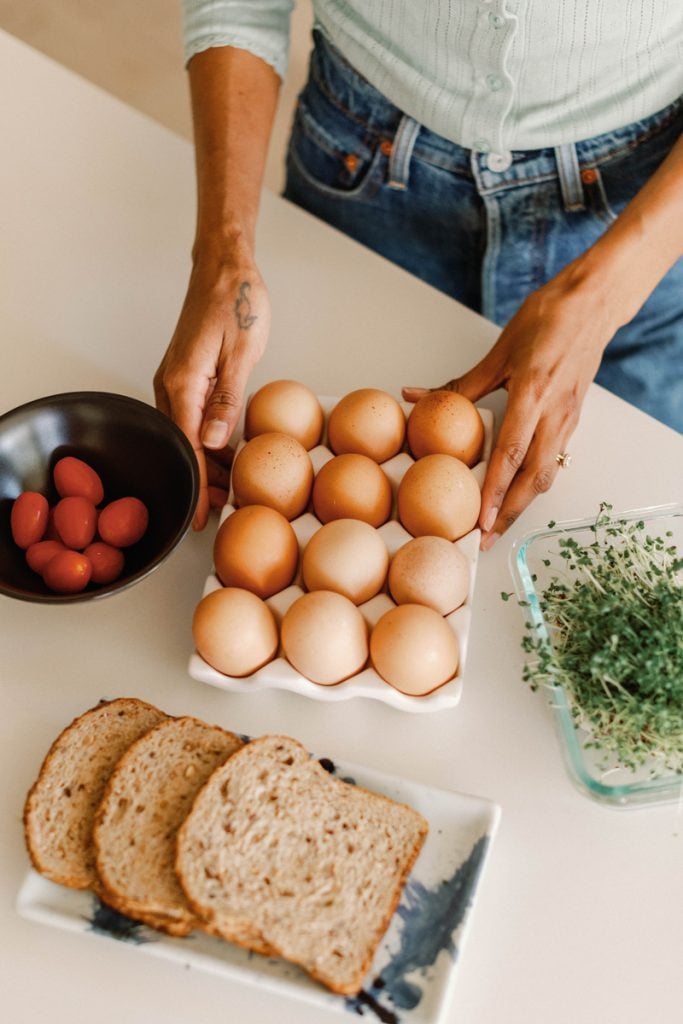
Everything to Know About Amino Acids
Protein is made of amino acids. When proteins are digested or broken down, amino acids are left. As the building blocks of protein, amino acids are necessary for breaking down food, repairing body tissue, and performing many other body functions. They can also be used as a source of energy! In total, there are roughly 20 different amino acids that link together in different combinations. Amino acids are classified into three groups.
Essential Amino Acids
The body can’t make essential amino acids. As a result, they must come from food. The nine essential amino acids are histidine, isoleucine, leucine, lysine, methionine, phenylalanine, threonine, tryptophan, and valine.
Nonessential Amino Acids
Nonessential means that our bodies can produce the amino acid, even if we do not get it from the food we eat. Nonessential amino acids include alanine, arginine, asparagine, aspartic acid, cysteine, glutamic acid, glutamine, glycine, proline, serine, and tyrosine.
Conditional Amino Acids
Last but not least, conditional amino acids. These are usually not essential, except in times of illness and stress. Conditional amino acids include arginine, cysteine, glutamine, tyrosine, glycine, ornithine, proline, and serine.

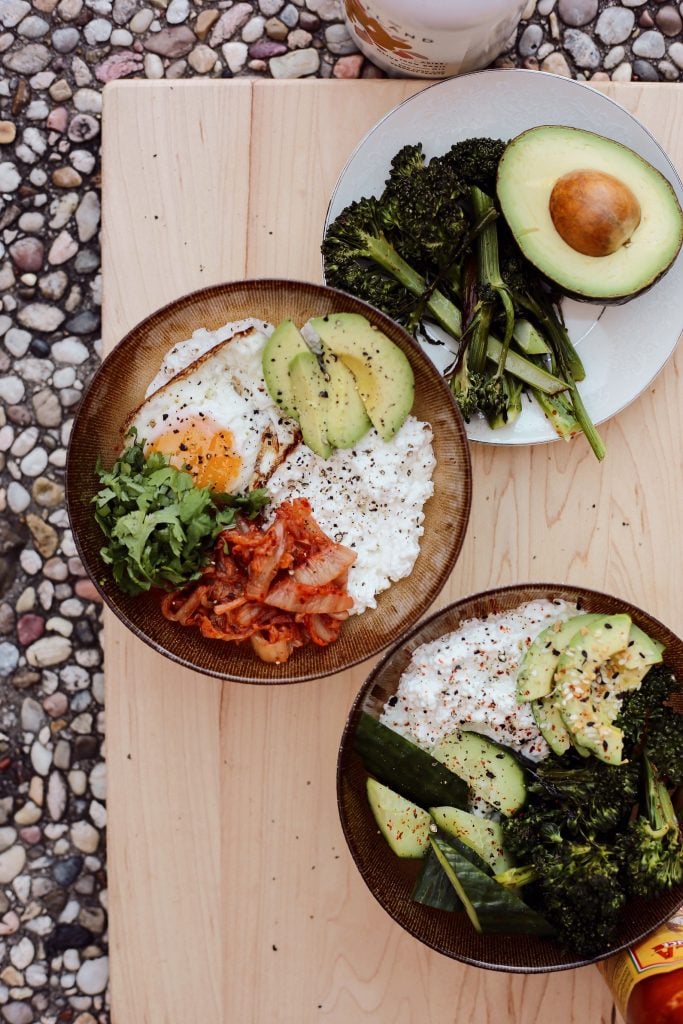
What is a complete protein?
When it comes to measuring the nutritional value of a protein, we look at the quantity of essential amino acids it contains. Different foods contain different amounts of essential amino acids. Generally speaking, animal proteins (chicken, beef, fish, and dairy) have all nine essential amino acids. These are known as complete proteins.
However, there are some plant foods that contain all nine essential amino acids: soy products, quinoa, amaranth, Ezekiel bread, spirulina, nutritional yeast, hemp seeds, and chia seeds. Other plant proteins—like protein-rich fruits, beans, lentils, and nuts—aren’t quite complete proteins (but are very close).
Can you get all the protein you need from a vegan diet?
Yes! If you follow a vegetarian or vegan diet, as long as you eat a wide variety of foods, you can absolutely get the protein you need. If you eat a strict vegetarian or vegan diet, focus on diversifying your plant foods (aim for 30+ plants, every week). In turn, you’ll ensure an adequate mix of essential amino acids. You’ll also want to consider a vitamin B12 supplement. When in doubt, work with a plant-forward healthcare provider to make sure you’re getting enough vitamins, minerals, and protein.

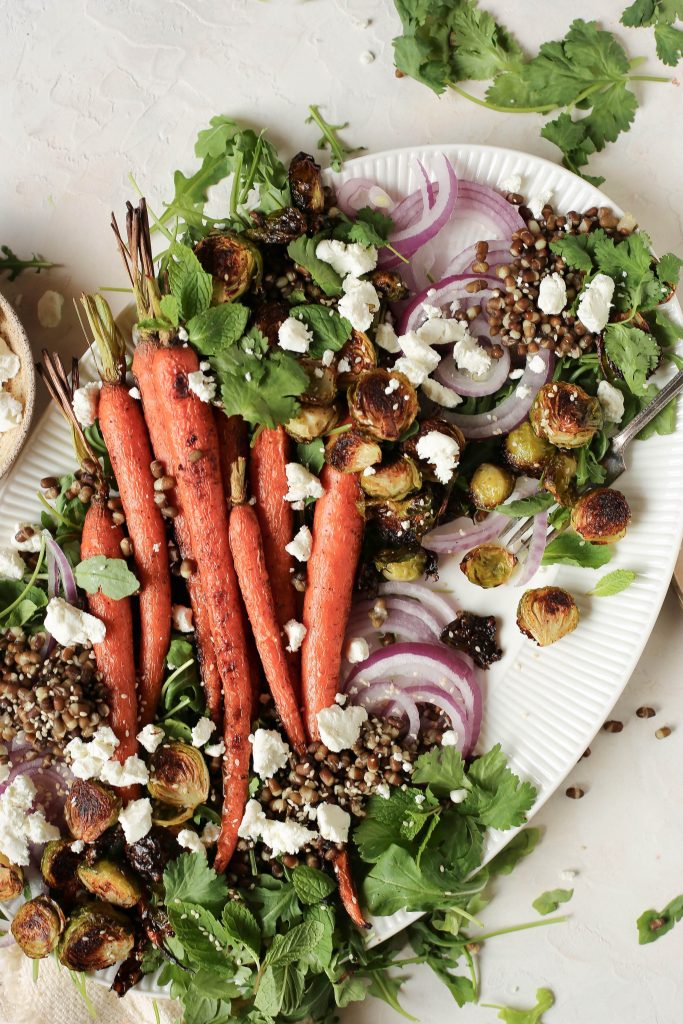
Vegan Sources of Protein
With general serving sizes in mind, below are vegan protein options (each contain 8-10 grams protein).
- Tree nuts (almonds, Brazil nuts, cashews, hazelnuts, macadamia nuts, pecans, pistachios, walnuts, etc.): 1/4 cup
- Nut butters: 2 tablespoons
- Seeds (pumpkin seeds, sunflower seeds, etc.): 3 tablespoons
- Hemp seeds: 2 tablespoons
- Tofu: 1/2 cup
- Tempeh: 1/3 cup
- Lentils: 1/2 cup, cooked
- Beans (black, pinto, etc.): 1/2 cup, cooked
- Chickpeas: 3/4 cup, cooked
- Nutritional yeast: 3 tablespoons
- Spirulina: 2 tablespoons
- Amaranth: 1 cup, cooked
- Quinoa: 1 cup, cooked


10 Protein-Rich Fruits
Speaking of vegan sources of protein, below are 10 high-protein fruits. Although you may not consider fruit a protein-rich food, it can absolutely support your daily protein goals. Eating several servings of fruit per day is a double-whammy. It’s a subtle way to increase your protein intake while also boosting overall nutrition. Aim to add these protein-rich fruits to your diet.

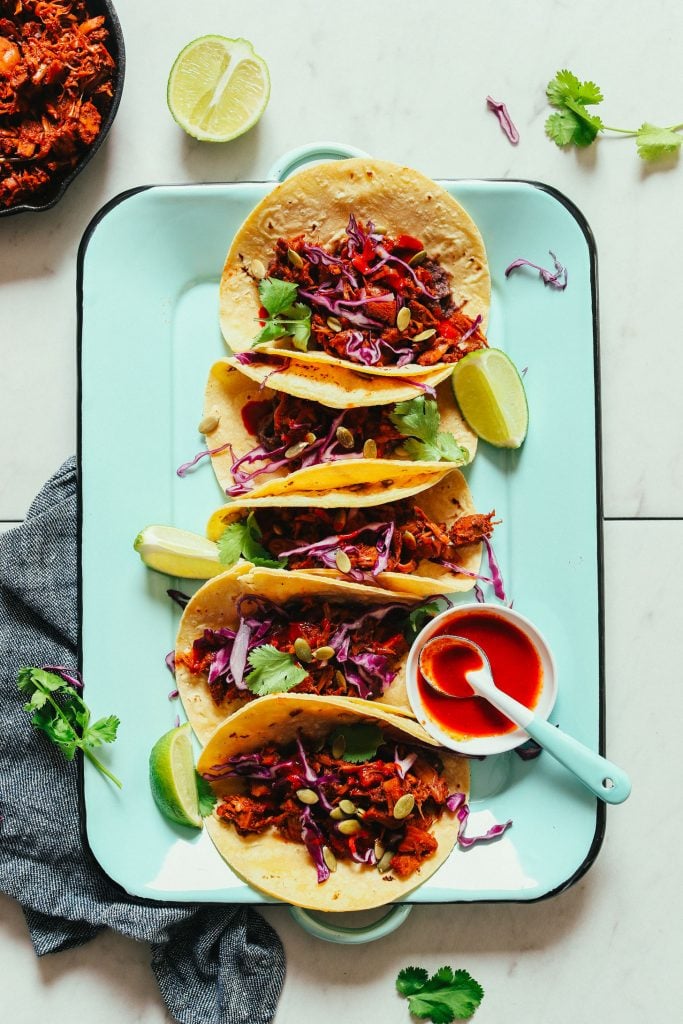
1. Jackfruit
Have you heard of jackfruit? A tropical fruit related to figs, its texture is uncannily similar to pulled pork. Because of this, it’s often used as a vegan alternative in everything from BBQ sandwiches to tacos. A one-cup serving contains three grams of protein. It’s also packed with other health benefits, like fiber, potassium, vitamin A, and more.
Recipe: Easy Jackfruit Tacos from Minimalist Baker

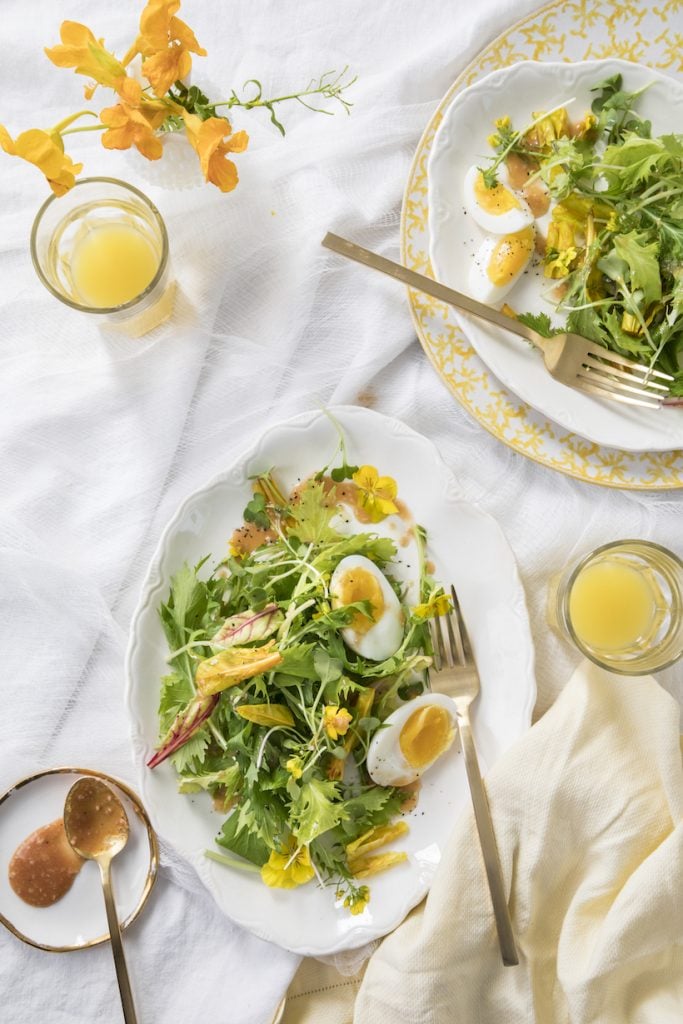
2. Guava
Another tropical delight, guava is one of the most protein-rich fruits. You’ll get a whopping 4.2 grams of protein in every cup. This tropical fruit is also high in vitamin C and fiber. Slice it up or bite right into it like an apple. You can even eat the seeds and skin, so there’s nothing to clean up.
Recipe: Baby Greens With Beet Leaves, Soft Boiled Egg, And Hot Guava Dressing

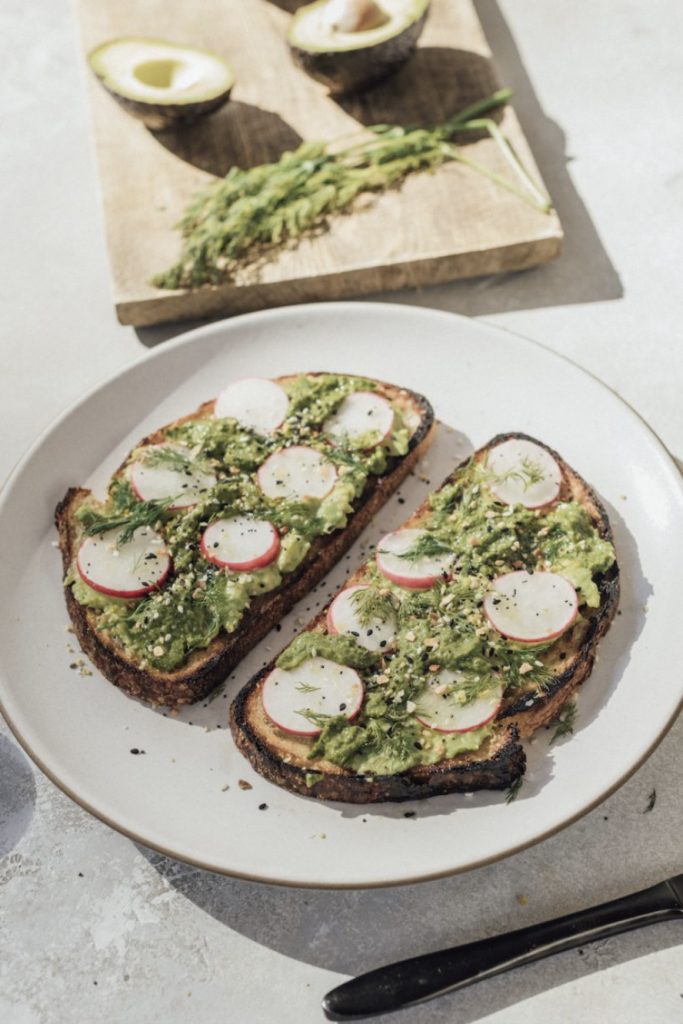
3. Avocado
You likely already know that avocado is an excellent source of healthy fats, but did you know it also contains three grams of protein in each cup? Avocado is rich in fiber, folate, magnesium, riboflavin, niacin, and vitamins C, E, and K. This fruit’s unique combination of fat and fiber will keep you full, too.
Recipe: Avocado Toast With Kale Pesto

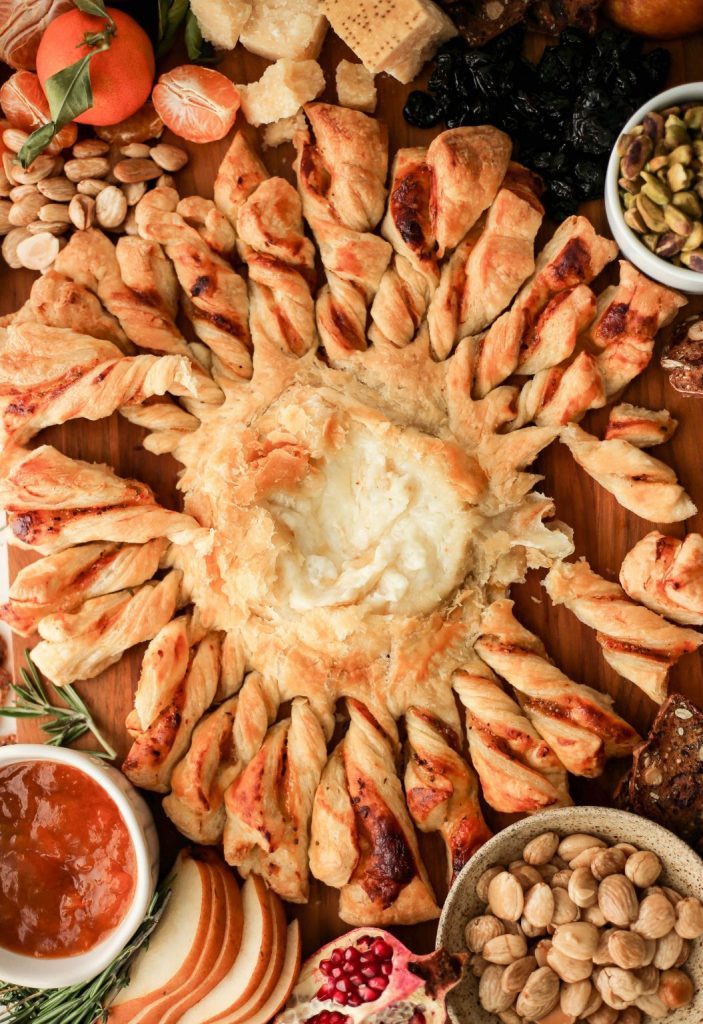
4. Apricots
One cup of raw (not dried) apricots provides two grams of protein. This stone fruit is also a good source of potassium and vitamins A and C—great for eye and skin health. The fiber in both the flesh and skin can aid digestion and keep you satisfied, too.
Recipe: Apricot And Brie Tarte Soleil

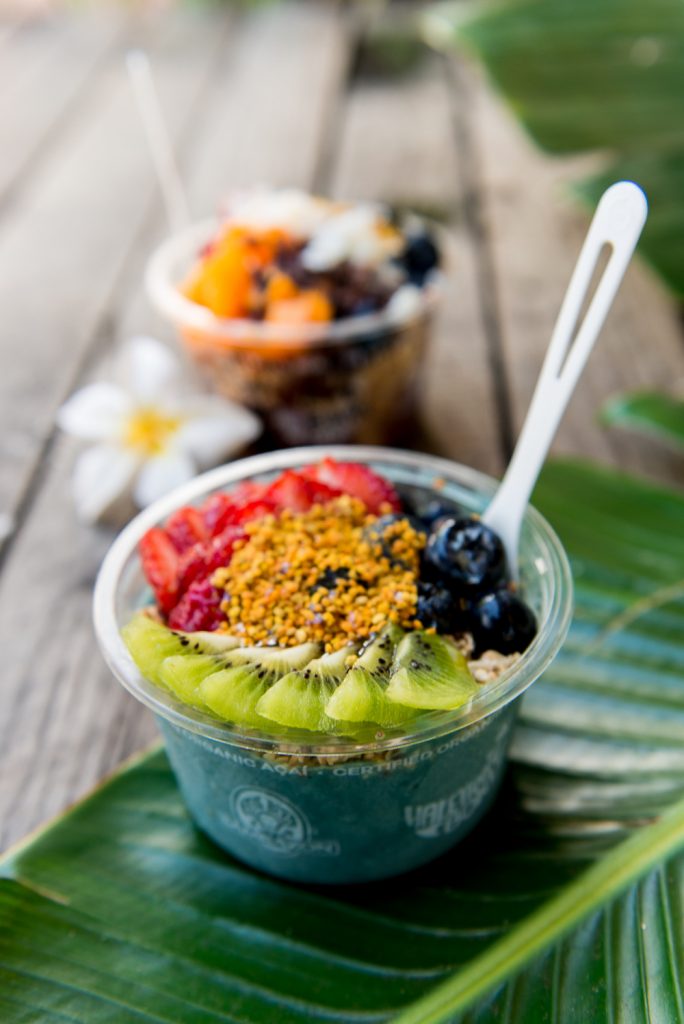
5. Kiwis
With two grams of protein per cup, kiwis are a nutritious addition to any diet. And you don’t have to spend much time preparing kiwifruit. It’s perfectly fine to eat the skin! Just make sure you clean it well then slice and eat. In fact, the skin houses additional fiber.
Recipe: Hale’iwa Smoothie Bowls

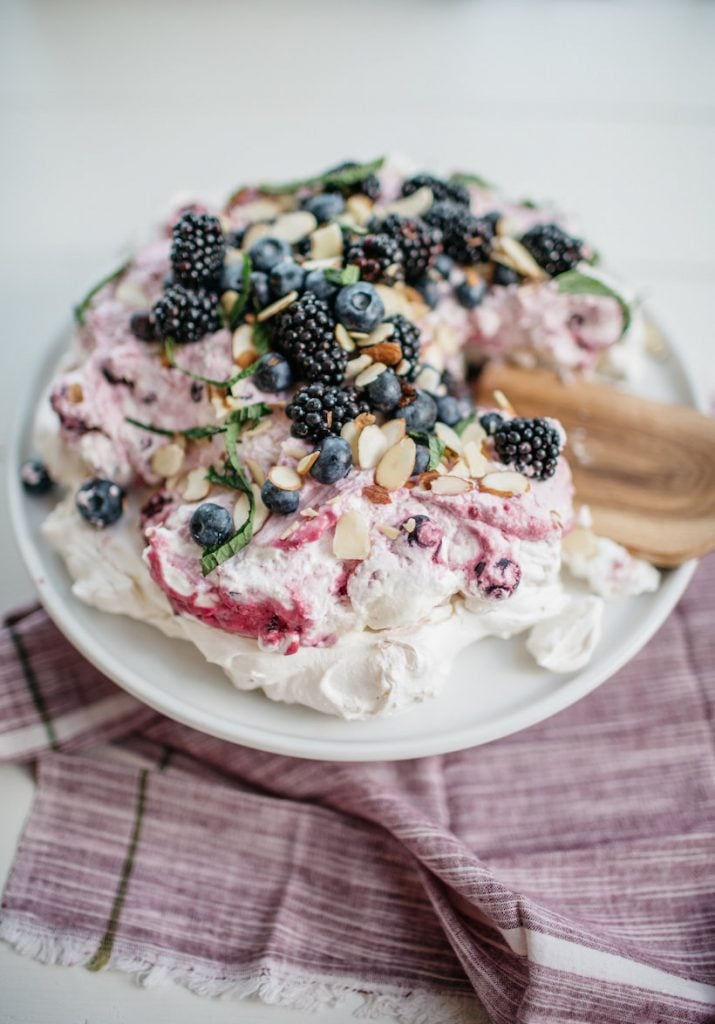
6. Blackberries
Along with kiwifruit, one cup of blackberries contains about two grams of protein—and, a whopping eight grams of fiber. You’ll also find nearly 50 percent of the recommended daily allowance of vitamin C, plus high levels of radical-fighting antioxidants and brain-boosting polyphenols.
Recipe: Almond and Blackberry Cream Pavlova

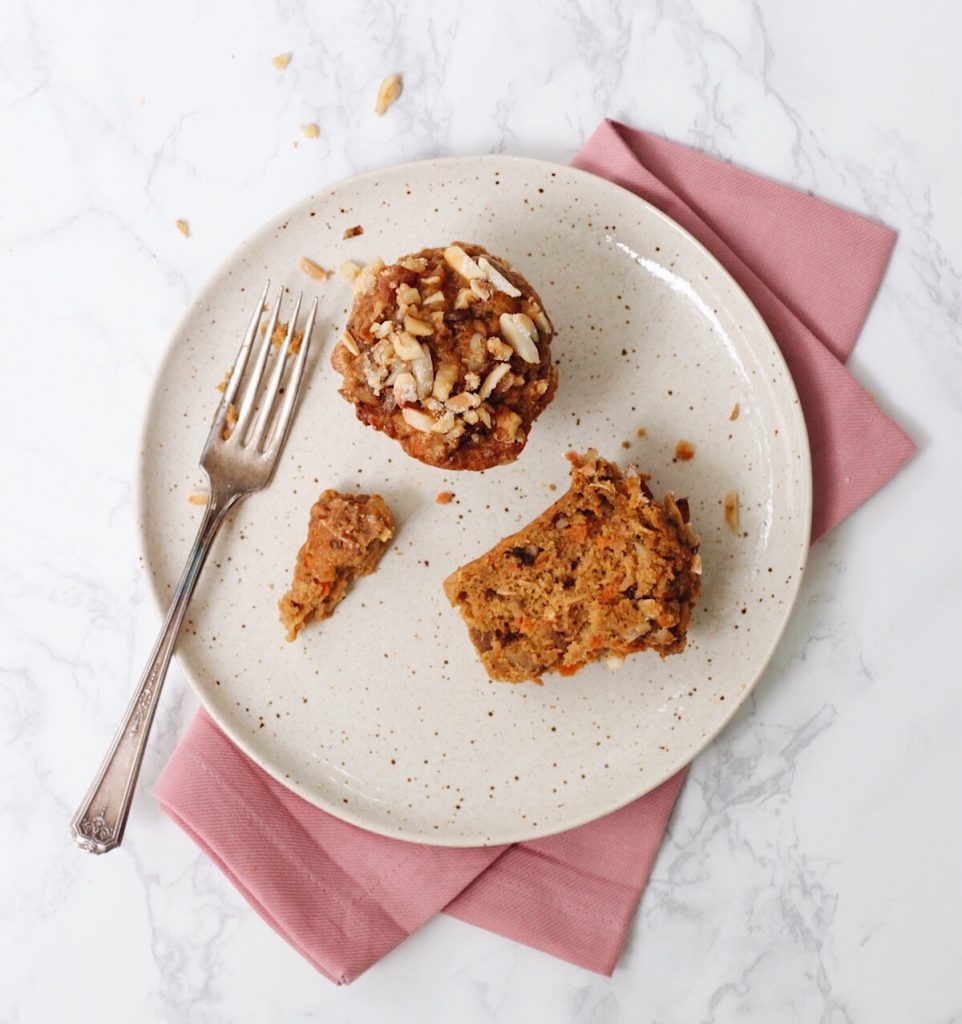
7. Raisins
If you love dried fruit, you’re in luck. Raisins are a good bet for protein. One ounce, or about 60 raisins, has nearly one gram of protein. Aim for organic raisins (grapes are highly sprayed with pesticides) and snack on them with nuts, sprinkle them on your yogurt at breakfast, or toss them into a salad for a touch of sweetness.
Recipe: Pumpkin Morning Glory Muffins

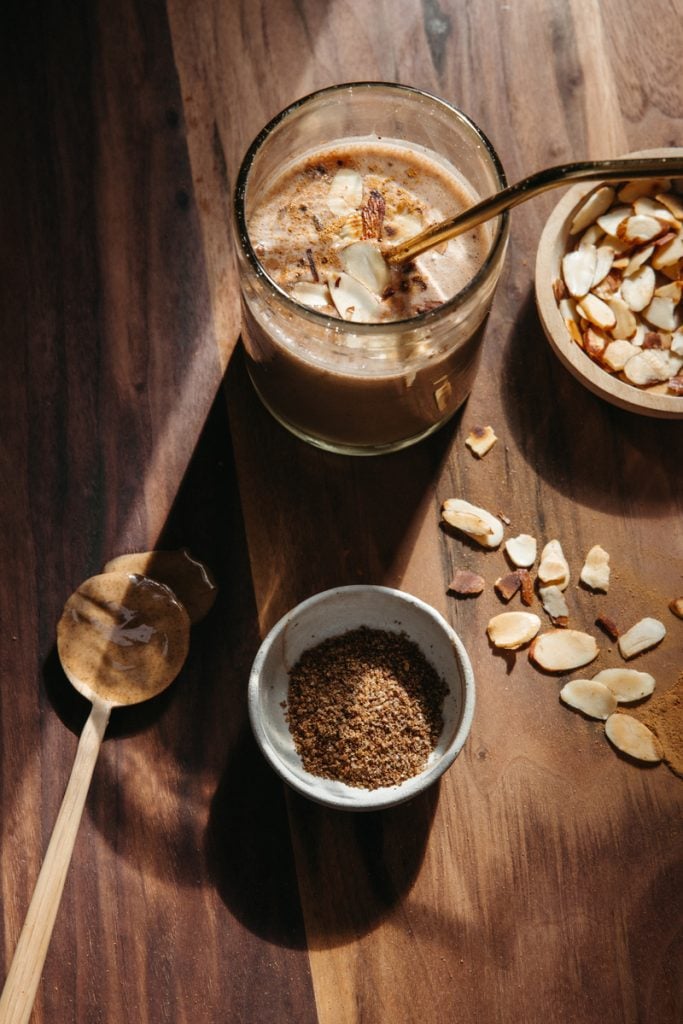
8. Bananas
Known for their potassium (eat one to ease menstrual cramps!), bananas also contain about 1.6 grams of protein in each cup. They’re a convenient source of fiber, prebiotics, vitamin A, and magnesium. And PSA: you should be eating those stringy bits. They’re like the pathway for all the nutrients inside the fruit.
Recipe: Chocolate Banana Almond Butter Smoothie

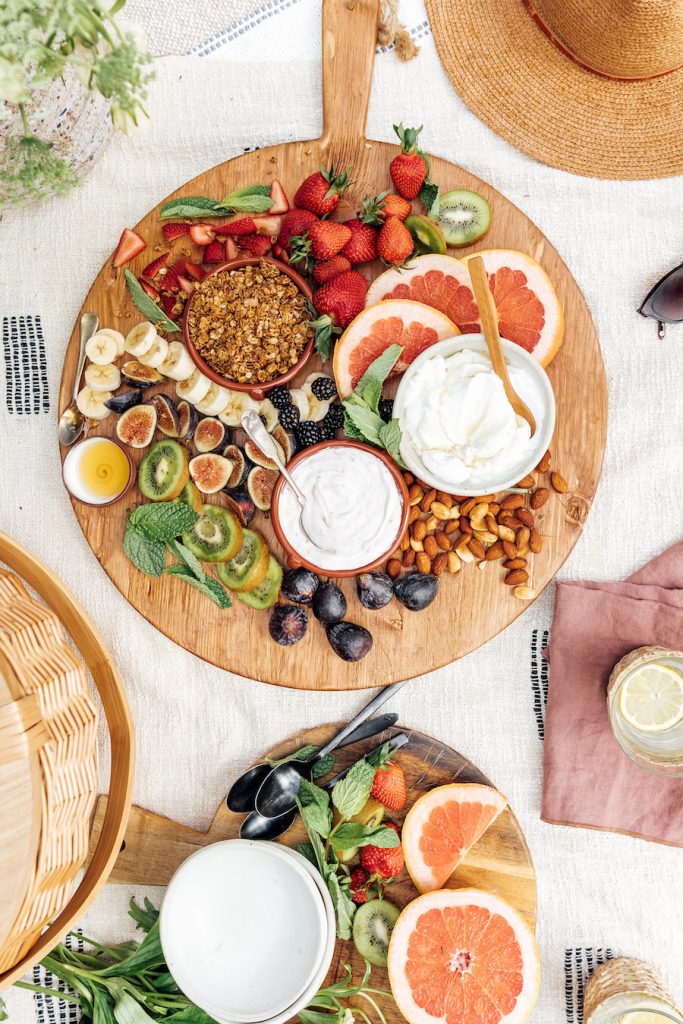
9. Grapefruit
Not only is this citrus fruit a vitamin C superstar, but one medium grapefruit provides almost two grams of protein. If they’re too tart for your liking, try this: heat a halved grapefruit under your oven’s broiler for a few minutes (until it caramelizes the top), then sprinkle ground cinnamon over it. Dig in with a spoon or plate it with Greek yogurt and chia seeds for a blood sugar-friendly breakfast.
Recipe: Breakfast Grazing Board

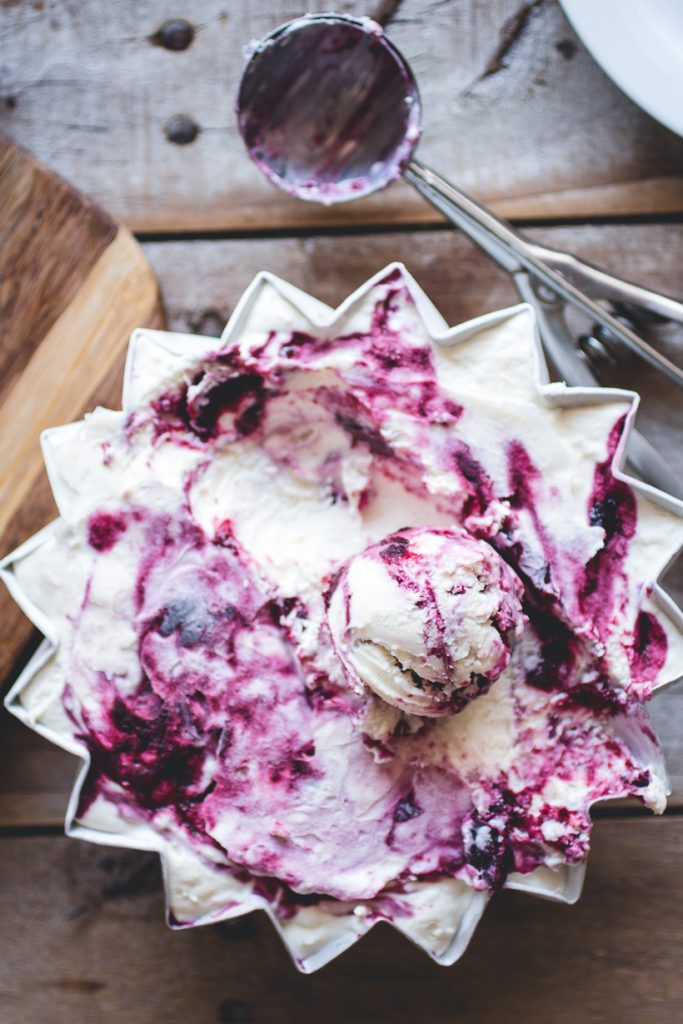
10. Cherries
Per cup, summer’s most delicious treat has over one gram of protein (pitted, naturally). They’re a great source of potassium, which can regulate blood pressure. Cherries also have antioxidant and anti-inflammatory properties. Cherries are also rich in melatonin, which can support your natural sleep cycles. When they’re not in season, you can buy them frozen for blending into smoothies!
Recipe: No-Churn Cherry Cheesecake Ice Cream






